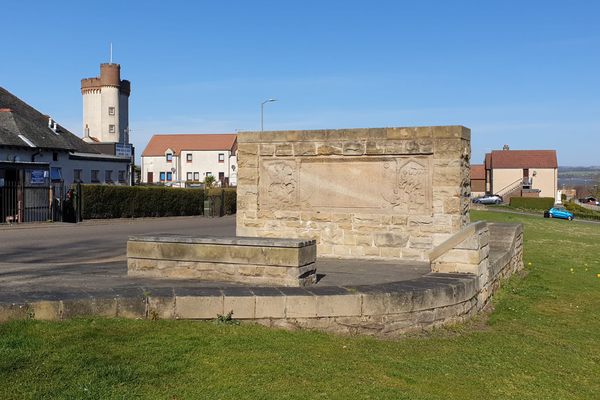Cobblestone Footpath
The raised stones in the middle of this road through Culross are relics of a 17th-century class divide.
Many of the visitors that seek out the quaint seaside village of Culross, (pronounced Coo-riss) come to soak up the picturesque atmosphere seen on the television program Outlander. The town serves as the show’s fictional village of Cranesmuir. But they might be missing some details that are easy to overlook. For instance, the pattern of the cobbled road of Kirk Street that runs from the Mercat Cross up to the Abbey.
Culross was founded in the 6th century, and due to the ingenuity of one of the town’s most prosperous citizens, it grew to a sizeable port that rivaled Glasgow by the 1600s. Sir George Bruce of Carnock (1568- 1625) established a coal mine, the first in the world that was located underwater. This, along with the production of salt from the Firth of Forth Estuary, would see the town explode in both population and prestige.
With the expansion of this tiny fishing village, a disparity arose between the mercantile and working classes. A prime example of this divide would be in the streets themselves. As there was no public sanitation system in place at the time, sewage, waste, and everything in between would be chucked out into the road, where it would eventually make its way downhill to the sea.
As one might imagine, the gentry were not about to soil their good threads and fine footwear. So, a path was created of larger stones that were slightly raised and ran down the middle of the walkway. This allowed members of high society to avoid a majority of the filth, while those less fortunate were left to wade through the muck in the gutters. It was a crime for the unworthy to use this elevated path, punishable by a fine or being tied to the pillory outside the Town House. This was a building located near the water’s edge, that acted as a courtroom, prison, and customs house.
Disaster struck Culross during a terrible storm in 1625 when the mine shafts were flooded. The village was not able to recover, it quickly lost its prestige and importance. Over the following centuries, it would fall further into a state of disrepair. Fortunately, The National Trust of Scotland purchased several buildings in the town and brought them back to their former glory. Now the town of Culross is known as the best-preserved 17th-century town in Scotland and is sought out by film crews throughout the world.
Know Before You Go
The Palace is closed between November 1 and March 3. Check the website for pricing and times. Highly recommend booking a tour of the town for an hour-long walk and history lesson.
The Abbey, located about a 10-minute walk up to the top of the hill, is also worth a visit. The building was closed because of the Coronavirus, but there are still some sights to see, including a burial ground and ancient buildings.
There is a pedestrian walkway along the Firth of Forth estuary that is also enjoyable on a dry day. Here, you can still see the remnants of Sir Bruce's underwater mines.
When walking the small cobbled streets, remember that people still live here and there will be moving vehicles.
Because of its size, Culross is not able to accommodate high volumes of traffic, especially during the high tourist season, (May to September). There are public parking lots at either end of the village. If possible, avoid traveling on a Saturday, and use public transport.
Culross is located 10 minutes west of Dunfermline, the nearest train station. One can catch a bus here, which will take under 30 minutes.


























Follow us on Twitter to get the latest on the world's hidden wonders.
Like us on Facebook to get the latest on the world's hidden wonders.
Follow us on Twitter Like us on Facebook